Heritage Trail Location 2
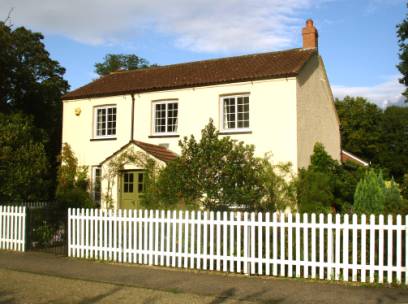
Photo 1 - Rose Cottage today
The house on your right is ‘Rose Cottage’; which was the first cottage hospital serving the Spa Baths.
Originally this was a farmhouse (Evelyn’s Farm) built in the late 18th century after the enclosure of the Woodhall and Langton parishes from 1767 to 69. Once former open grazing land had been enclosed by hedges, it became customary to establish farms in the new fields since they were often a considerable distance from the original village centres.
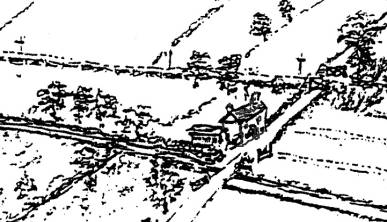
Fig 1 - Evelyn's Farm (Rose Cottage) in about 1860. Fragment of an aerial sketch by Johnny Wield. Courtesy of the Cottage Museum
In 1873 Dr. Robert Cuffe, who was the medical superintendent and tenant of the Victoria Hotel and Spa Baths, established a small hospital here for patients who could not afford to stay at the Victoria Hotel. Many patients attended from all over the country and it is said that many nailed their crutches to the back door once they were cured.
The hospital was later replaced by the Alexandra Hospital, built on the instigation of Rev. J. Otter Stephens of Blankney (one of the ‘Syndicate’) on a larger scale in 1890. This hospital was a large building just past, and opposite the Golf Hotel, in the Queen Anne Revival Style.
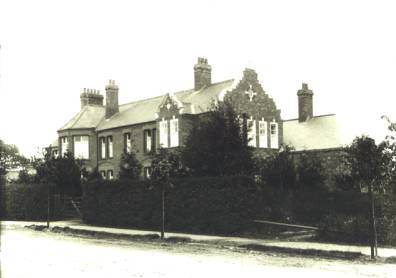
Photo 2 - The Alexandra Hospital circa 1900, before it was extended to its present size. (Postcard from Webmaster's collection).
The Alexandra Hospital continued to be used by the National Health Service for patients attending the Spa Baths until the collapse of the well in 1983. The patients were transferred to Lincoln, where a ward still retains the name ‘Alexandra’. The building has now been converted into flats.
When Dr. Robert Cuffe, was superintendent, he appeared to have conflicting views with Thomas Hotchkin, the owner of the Spa Baths. Cuffe was very keen to develop the medical science associated with the water and keen to promote the healing properties to all classes. Thomas Hotchkin had invested considerable sums of money in the Spa Baths and naturally wanted to see some return on his investment. A rift in treatment policy seems to have developed between the two men particularly after the founding of the cottage hospital.
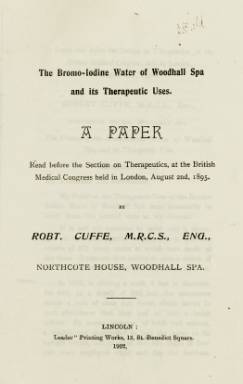
Fig 2 - Frontispiece of Robert Cuffe’s paper read to the British Medical Congress in 1895
In November 1883 a hand bill was circulated by Thomas Hotchkin stating that his ex tenant, Robert Cuffe was no longer associated with the Spa Baths and had taken considerable quantities of spa water and other materials from the spa. This may suggest that Robert Cuffe either continued treatment from Rose Cottage or from his residence in Iddesleigh Road, Northcote House.
Cuffe’s continuing interest in spa water therapy resulted in him publishing a paper on his investigation in 1895. In it, he alludes to controversial treatments, without going into details, and mentions the specific use of the high concentrations of iodine and bromine present in the spa water to treat inflammation and nervous disorders. He based his results on 571 cases he investigated whilst at the Spa Baths and was clearly at the forefront of his field. It is clear that once his work was published and recognised his ideas formed the basis for the various treatments carried out at the Spa Baths in the early 20th century.
In the 1930s, John Lewis lived at Rose Cottage. He bought the Spa Baths Estate (Spa and grounds) from the Weigalls in late 1929 with the aim to run it more profitably. Up to this point it had been losing money, largely because of the post 1st World War decline. The Town Council was involved as under the previous agreement they had subsidised the Spa Baths. John Lewis seems to have entered into some kind of negotiation to run the baths with the Weigalls and the Town Council which then fell through, possibly due to the deepening of the depression after 1929. The result was that Lewis closed the Spa Baths and the grounds for a short time and forbade access to the grounds, which by then had become a popular walking area. Lewis’s ideas for the Spa never materialised and he sold it back to the Weigalls in June 1935, after having removed some of the equipment. This was stored for many years in the greenhouses at the back of Rose Cottage.
Heritage Trail locations
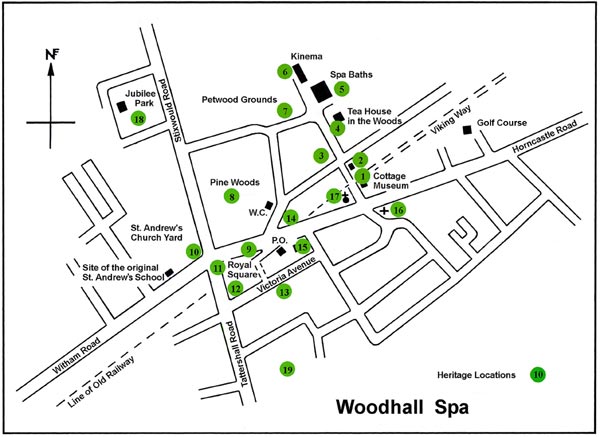
he trail can be started at any location, but we suggest you also visit the Cottage Museum to see the photographs taken by John Wield during the heyday of the Spa and items associated with this unique Victorian Spa town.
The Trail is just one of several projects in the hands of the Woodhall Spa Parish Council sponsored Heritage Committee. Click here if you are interested in the committee or their projects.
How well do you know Woodhall Spa?
See if you can identify the location of these architectural features and items of street furniture! Or find the Letterbox (coming soon)
Find out more about the Woodhall Spa Conservation Area